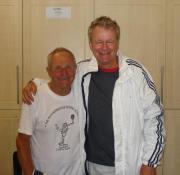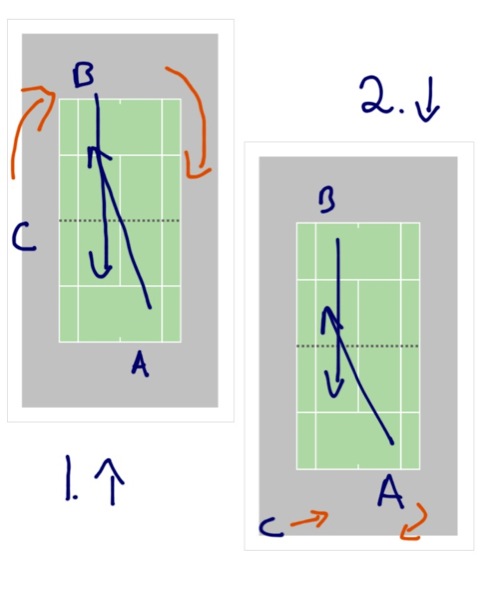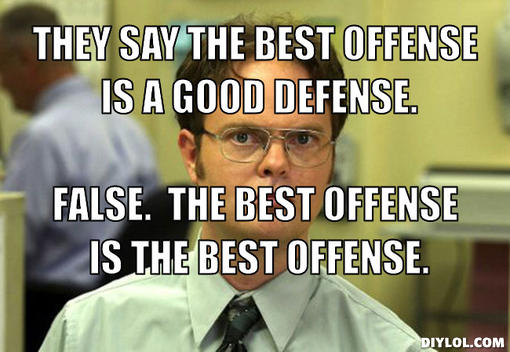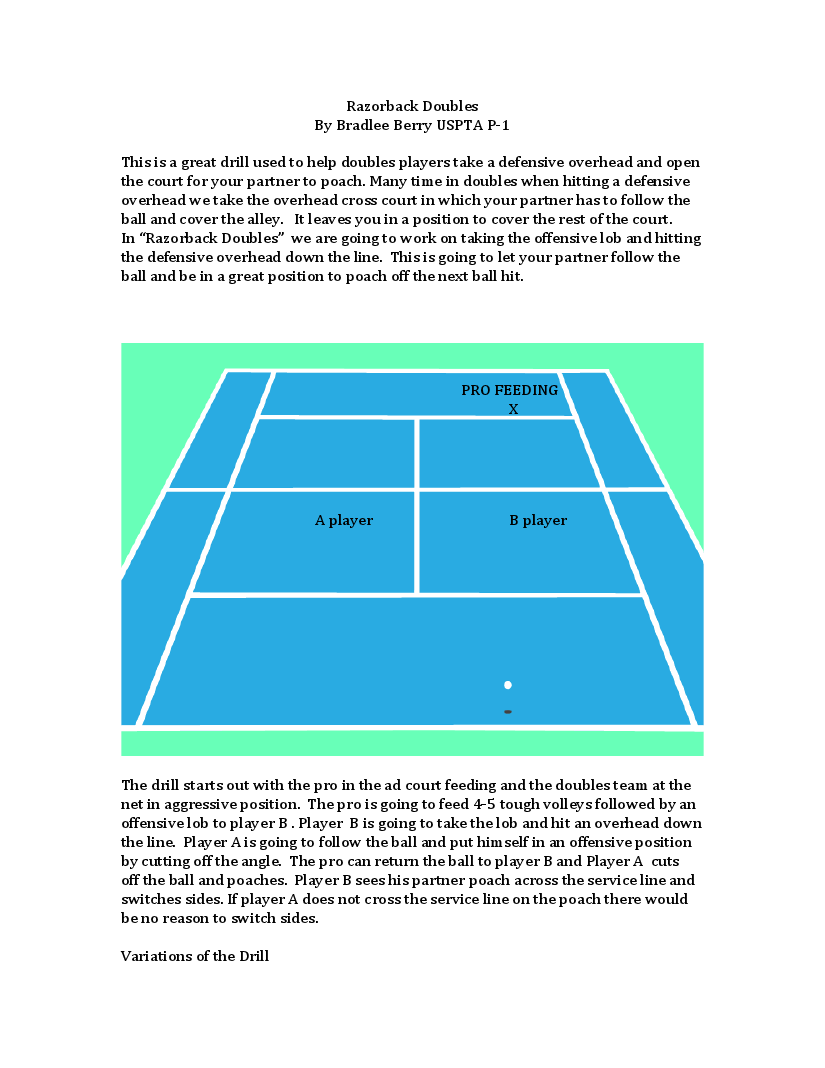Bruce Tarran: Mini Tennis – How a Good Idea Got Complicated
 Friday, February 3, 2012 at 12:39PM
Friday, February 3, 2012 at 12:39PM  CAtennis
CAtennis  In the next few weeks, CAtennis.com will host a discussion regarding the Pros and Cons of the implementation of Quickstart/ROG [i.e. red, orange and green balls] in the United States. Coaches with decades of experience in the field of early tennis development will share some of their thoughts on the subject. As CAtennis.com doesn't take a particular stance on the subject, we hope that, for everyone's benefit, the truth will be synthesized or distilled through a civilized discussion. In the meantime, we are proud to present the following article (reproduced with the permission of the author) by Mr. Bruce Tarran. If you are a fan of clever, British humor we suggest that, in addition to reading Mr. Tarran's thoughts, you watch the linked videos below. We would like to extend our gratitude to Mr. Tarran for sharing his experiences and allowing us to utilize the article and videos enclosed herein.
In the next few weeks, CAtennis.com will host a discussion regarding the Pros and Cons of the implementation of Quickstart/ROG [i.e. red, orange and green balls] in the United States. Coaches with decades of experience in the field of early tennis development will share some of their thoughts on the subject. As CAtennis.com doesn't take a particular stance on the subject, we hope that, for everyone's benefit, the truth will be synthesized or distilled through a civilized discussion. In the meantime, we are proud to present the following article (reproduced with the permission of the author) by Mr. Bruce Tarran. If you are a fan of clever, British humor we suggest that, in addition to reading Mr. Tarran's thoughts, you watch the linked videos below. We would like to extend our gratitude to Mr. Tarran for sharing his experiences and allowing us to utilize the article and videos enclosed herein.
Bruce's background: Bruce Tarran is an LTA Licensed Professional Tennis Coach. He is currently Head Coach at Leicestershire Lawn Tennis Club, an 18-court members club in Leicester, England. He was a county and regional coach for many years, and individual coach to a large number of county and national juniors. His last two clubs were awarded LTA performance status. He believes that there are few pleasures in life like watching children learn to love tennis. For more information, please visit www.tarrantennis.co.uk or http://www.youtube.com/user/Tarrantennis.
___________________________________________________________________________________
A few months ago I put some videos about the negative effects of the current British mini tennis structure on youtube. They have now had around 15,000 views. Just over 100 British tennis coaches wrote to me about them. 6 disagreed completely, 3 said the problems lay elsewhere, and the rest either strongly or broadly agreed with the videos. It can’t be taken as a representativesurvey, of course, (although my experience is that people are more likely to write when they disagree!) but it would seem that the majority of working British tennis coaches have, to put it mildly, some reservations about aspects of our mini tennis structure.
As elements of this structure are now being rolled out around the world, it seems that the experience of British coaches who have worked under this system should be taken into account. Let me say straight away that I believe low compression balls and appropriately sized racquets and equipment are superb teaching tools when used appropriately. The problem isn’t the balls; it’s the complex system which has been constructed around them.
Good teaching demands progression. It must allow for children to be grouped together by standard as well as age. The mini tennis competition structure insists that players are grouped together by age only, so, according to their date of birth an 8 year old cannot play with a 9 year old who cannot play with a 10 year old who cannot play with an 11 year old. Each age must play with a different ball on a different sized court, without mixing and regardless of their standard or rate of improvement. It is not the transition balls that are bad, it is the prescription placed around them.
In competition different ages are not allowed to mix. There is a passport system where players can supposedly move up (from red to orange, for instance). But in practice because of the number of competitive matches required in a short space of time, this happens in a minimum of cases. Most British juniors compete in their designated colour throughout, whatever their standard, and whatever their ability or skill level.
Because each colour covers a single year this reduces the size of competitions. This particularly affects girls who generally much prefer, at a young age, to play against other girls. Instead, because fewer girls than boys play tennis anyway, they are forced to compete primarily against boys and this has decimated girl’s competition in some areas at a young age.
About 1% of tennis courts in Britain are indoors, yet mini tennis is often marketed as an indoor game. Certainly indoor mini tennis, particularly with the sponge balls for starting reds, is superb, but the vast majority of junior tennis in Britain is played outdoors and adapting mini tennis to the British weather is rarely discussed.
In general I have had a wonderful response to these videos, in Britain and across the world. I am very grateful to everyone who has taken the time to write to me and show an interest, whatever their point of view. I believe that discussion and debate are good – prescription and inflexibility are bad. In my opinion it is a mistake to put a complex, prescriptive structure around what is basically a superb teaching tool. Using the appropriate low compression balls with appropriate sized racquets can bring fast progress, but this progress may then demand the flexibility to move the child on. Good teaching demands flexibility – and therefore striving for a less prescriptive and rigid system is essential in the best interests of the child.
___________________________________________________________________________________







